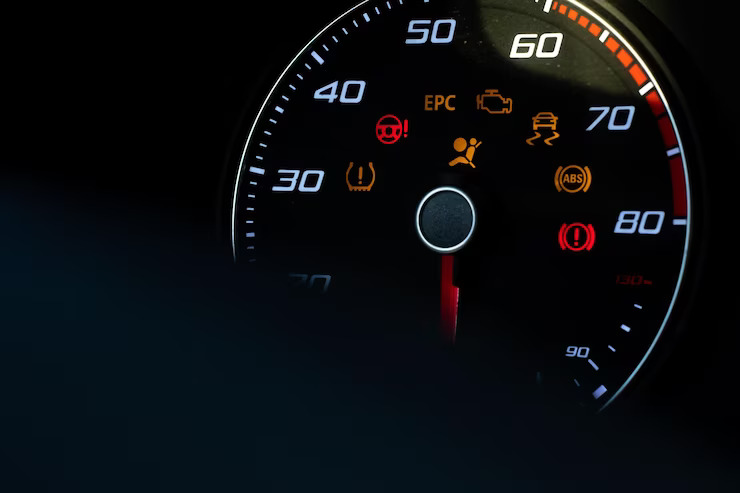Trailer sway is a common concern when towing trailers or caravans. It refers to the side-to-side movement of the trailer, which can be dangerous and lead to loss of control if not addressed promptly. To help mitigate trailer sway, many vehicles are equipped with trailer sway control systems. These systems utilize sensors and advanced technology to detect and counteract trailer sway. However, if an issue arises within the system, it can trigger a trailer sway control warning light on the dashboard. In this article, we will explore the causes of trailer sway control warning lights and provide potential fixes.
Causes of Trailer Sway Control Warning Lights:
- Faulty Sensors: Trailer sway control systems rely on sensors to detect trailer movement and initiate corrective actions. If one or more of these sensors become faulty or fail, it can trigger the trailer sway control warning light. Sensor malfunctions can occur due to wiring issues, physical damage, or sensor calibration problems. When the sensors fail to provide accurate data, the system may not be able to effectively counteract trailer sway, leading to a warning light activation.
- Electrical Issues: Trailer sway control systems utilize electrical components, such as control modules, relays, and wiring, to operate effectively. Electrical issues, such as blown fuses, loose connections, or malfunctioning control modules, can disrupt the system’s operation and trigger warning lights. These issues can arise due to electrical disturbances, component aging, or manufacturing defects. When the electrical components fail to function correctly, the trailer sway control system may not respond as intended, resulting in a warning light activation.
- Towing Vehicle and Trailer Mismatch: Proper trailer sway control relies on the compatibility between the towing vehicle and the trailer being towed. If the trailer is too heavy or unbalanced for the towing vehicle, it can lead to increased trailer sway and trigger the warning light. Mismatched weight distribution, improper hitching, or incorrect trailer loading can all contribute to trailer sway. Ensuring the towing vehicle and trailer are appropriately matched in terms of weight and loading is crucial to prevent excessive sway and warning light activation.
- Environmental Factors: Environmental factors, such as strong crosswinds, uneven road surfaces, or sudden maneuvers, can contribute to trailer sway. While trailer sway control systems are designed to minimize the effects of these factors, extreme conditions can exceed the system’s capabilities. In such situations, the system may activate the warning light to alert the driver that trailer sway control intervention is limited.
Fixes for Trailer Sway Control Warning Lights:
- Check and Reset the System: If the trailer sway control warning light illuminates, start by checking the system for any visible issues. Inspect the wiring, connections, and sensors for damage or loose connections. If no visible issues are found, try resetting the system by turning off the engine, waiting for a few minutes, and then restarting the vehicle. This can clear temporary glitches or errors within the system.
- Ensure Proper Towing Setup: Verify that the towing setup is correct and properly adjusted. Check the hitch connection, safety chains, and weight distribution. Ensure that the trailer is loaded properly and within the recommended weight limits. Adjust the hitch height and weight distribution as needed to achieve proper balance and stability. Correcting any towing setup issues can help alleviate trailer sway and prevent warning light activation.
- Professional Diagnosis: If the warning light persists or if the underlying issue is not apparent, it is recommended to seek professional assistance. Authorized dealerships or reputable towing service centers have the expertise and specialized equipment to diagnose and address complex problems within the trailer sway control system. They can perform in-depth inspections, access technical service bulletins or recalls specific to your vehicle, and provide accurate diagnosis and repair solutions.
- Consider Aftermarket Solutions: In some cases, aftermarket trailer sway control devices or upgrades may be available to enhance the towing stability and reduce sway. These solutions can supplement the existing trailer sway control system and provide additional support. Consult with towing experts or authorized dealerships to explore suitable aftermarket options for your specific towing needs.
Regular maintenance and care of the trailer sway control system, including sensor calibrations and inspections, can help prevent potential issues. Follow the manufacturer’s recommended maintenance schedule and guidelines for towing safety to ensure optimal performance and safe towing experiences.
Trailer sway control warning lights indicate potential problems within the trailer sway control system. By understanding the possible causes and following the appropriate troubleshooting steps, drivers can address the issues promptly, ensure safe towing, and enjoy a more stable and controlled towing experience.











